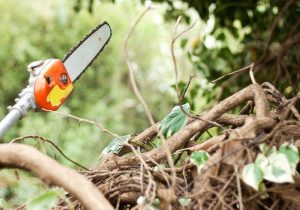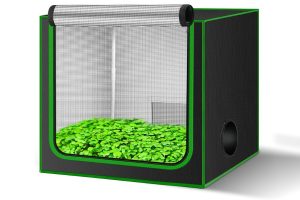Last Updated on April 12, 2024 by teamobn
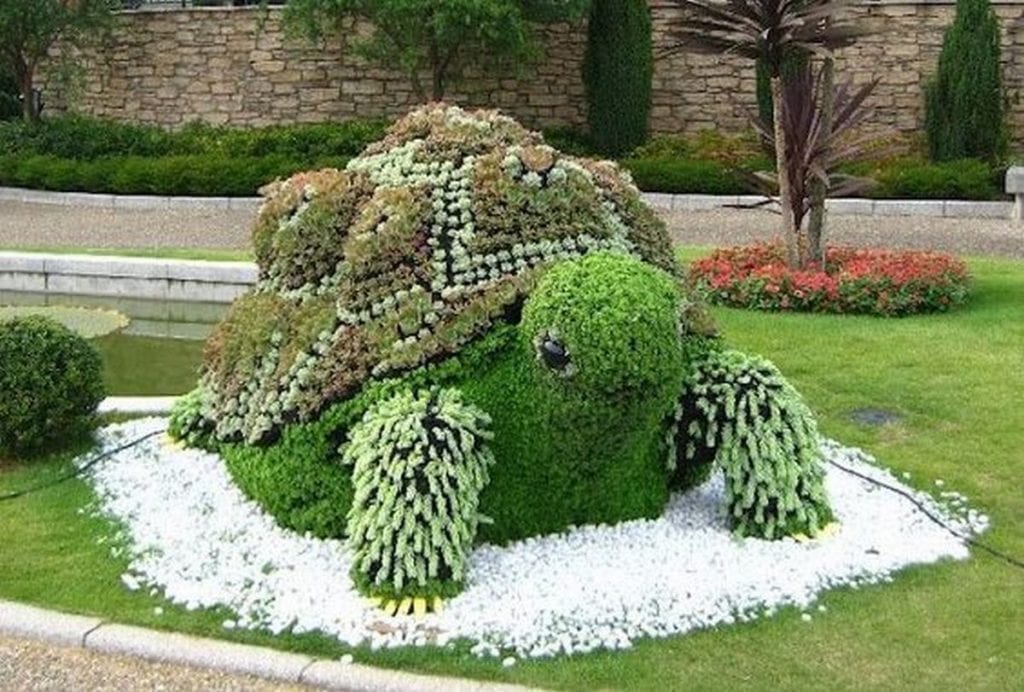
As an avid gardener, I am constantly looking for ways to give my garden an upgrade. Luckily, there are a lot of ideas available on the Internet. Whether it’s about a new plant or a new garden décor, there are always fresh ideas that I can easily follow.
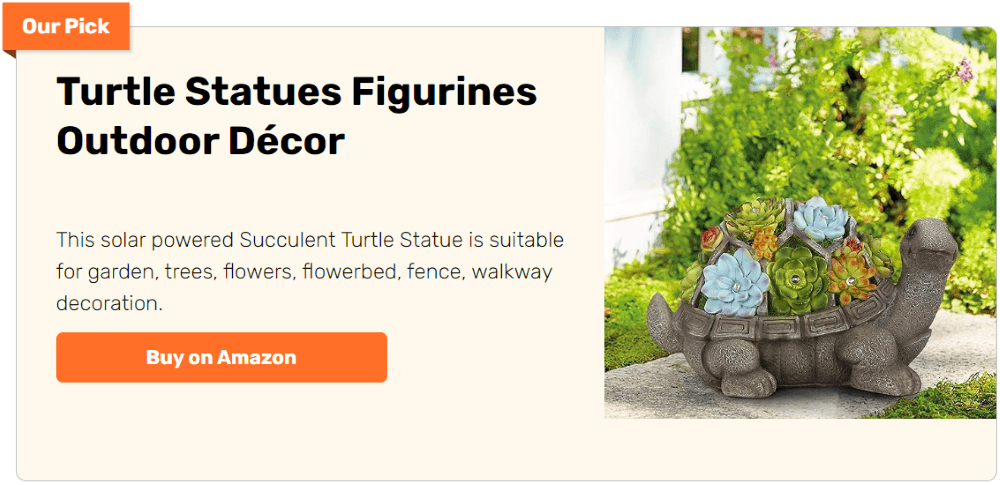
One of the most adorable garden projects that I came across is a turtle topiary. When I saw a photo of it, I knew I had to make one. I love that it’s both functional and decorative in nature. I made several and planted succulents on them. To this day, the turtles are a source of joy for my family and friends.
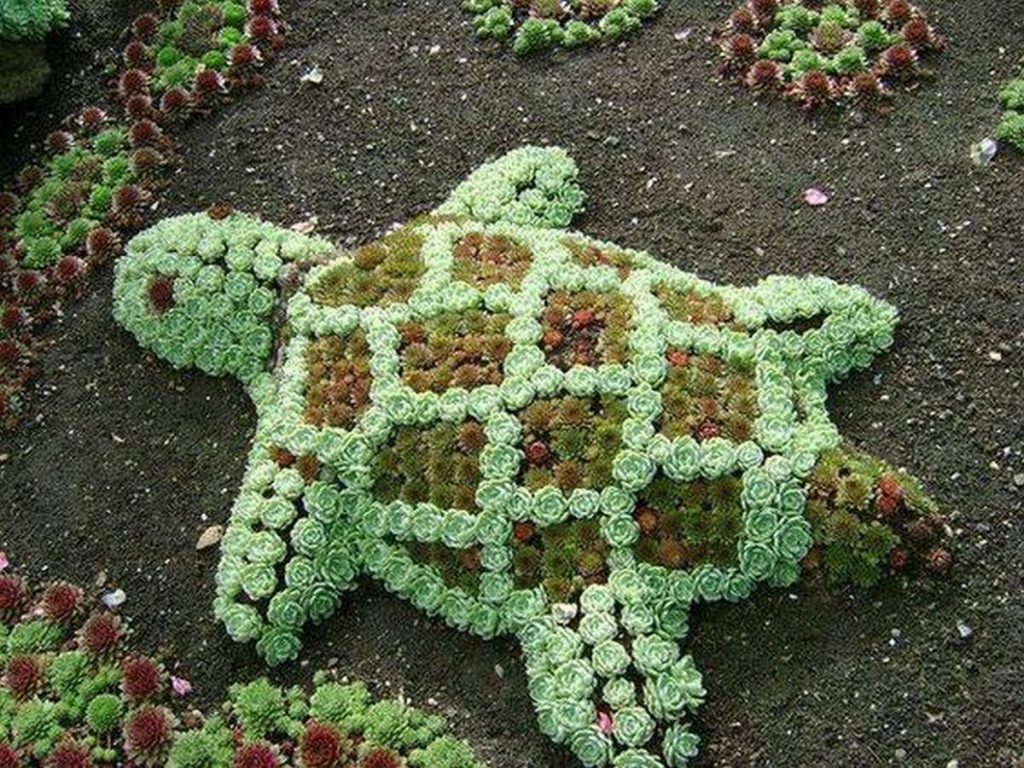
This is a very easy project that you can do, too. For something so simple, the benefits are big. You’re sure to enjoy them for many years.
Making Your Turtle Topiary
Contents
Materials
- 12″ wire hanging basket with coco liner
- 4 pcs – 4” clay pots
- Sphagnum moss
- A small roll of chicken wire
- Succulents
- Washers, wire and an old plastic pot
Tools
- Snips
Instructions
Step 1: Prepare the Frame
- Take the 12″ wire hanging basket and remove its handle. This basket will serve as the main body of your turtle.
- Use the snips to cut a piece of chicken wire large enough to cover the opening of the basket. This will help hold the contents inside once the basket is flipped over.
Step 2: Attach the Legs and Head
- For the turtle’s legs and head, use the 4 clay pots. Position them around the basket where they naturally fit: one for the head and three for the legs.
- Secure each pot to the basket using wire. Ensure they are firmly attached and stable. You might need to use the snips to create small holes in the chicken wire to thread the wire through.
Step 3: Line the Basket
- Line the inside of the basket (which will now be the underside) with the coco liner to help retain soil and moisture. Trim any excess liner with your snips for a neat finish.
Step 4: Fill with Sphagnum Moss
- Fill the basket and clay pots with damp sphagnum moss. This will act as the base for your succulents to root into and helps keep moisture.
Step 5: Plant the Succulents
- Begin planting your succulents into the sphagnum moss. Arrange them creatively, considering their sizes and growth patterns. Succulents are ideal because they require minimal water and are quite resilient.
Step 6: Add Details and Stability
- Use additional wire and washers to add extra stability to the turtle structure if needed. You can also use small pieces of chicken wire to create a tail or enhance the shape of the turtle.
Step 7: Final Placement and Care
- Once assembled, place your turtle topiary in a sunny spot in your garden where it can thrive. Succulents prefer bright, indirect light.
- Water the topiary sparingly, as sphagnum moss and succulents retain a lot of moisture. Be careful not to overwater.
Step 8: Maintenance
- Regularly check your topiary for dryness and water as needed. Prune any overgrown succulents to maintain the turtle’s shape.
Click on any image to start the lightbox display. Use your Esc key to close the lightbox.

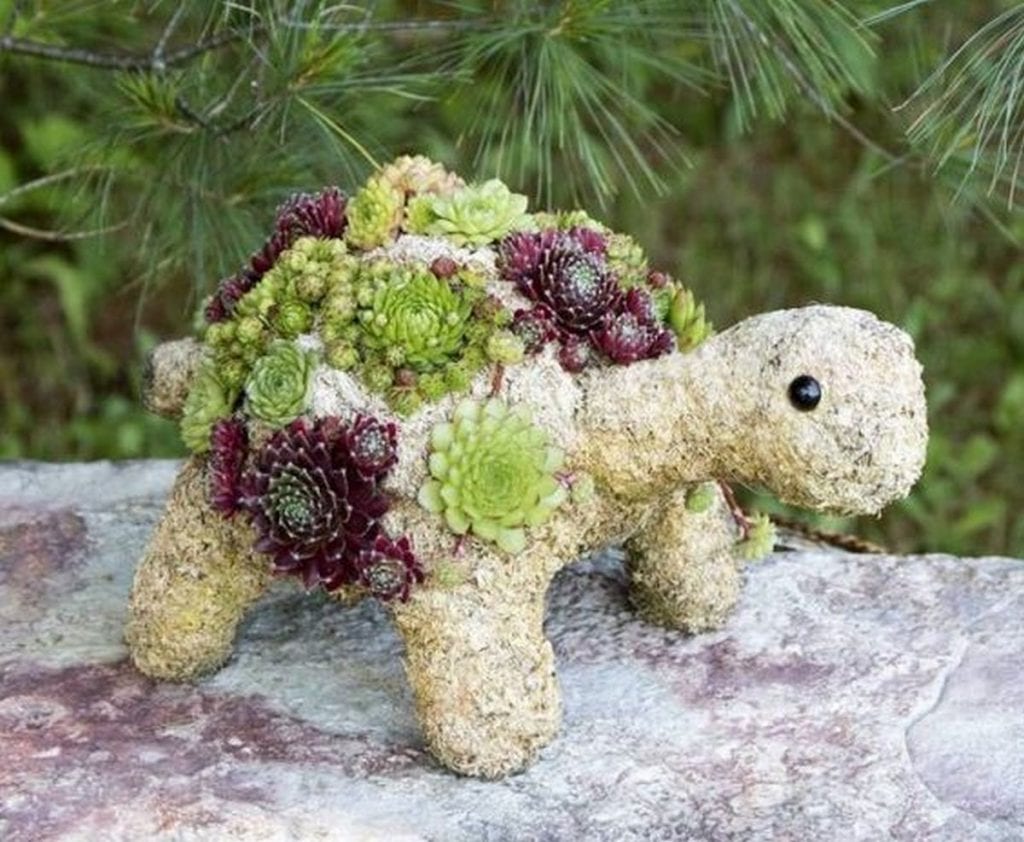
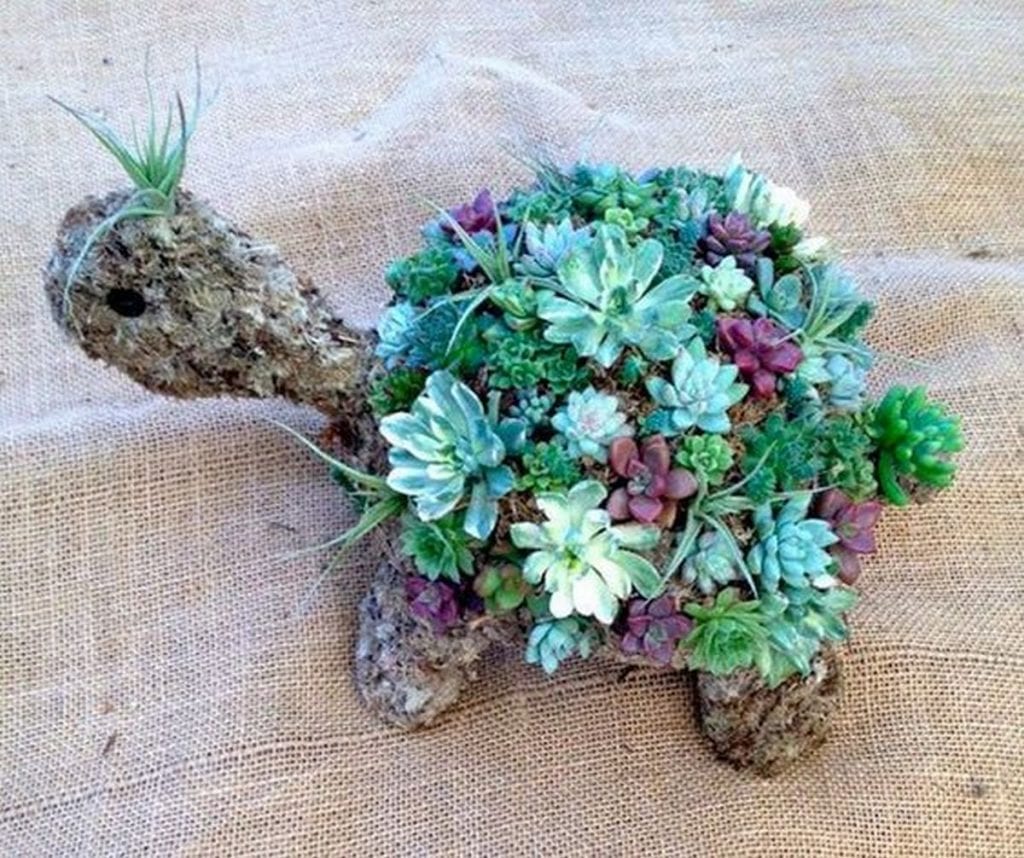
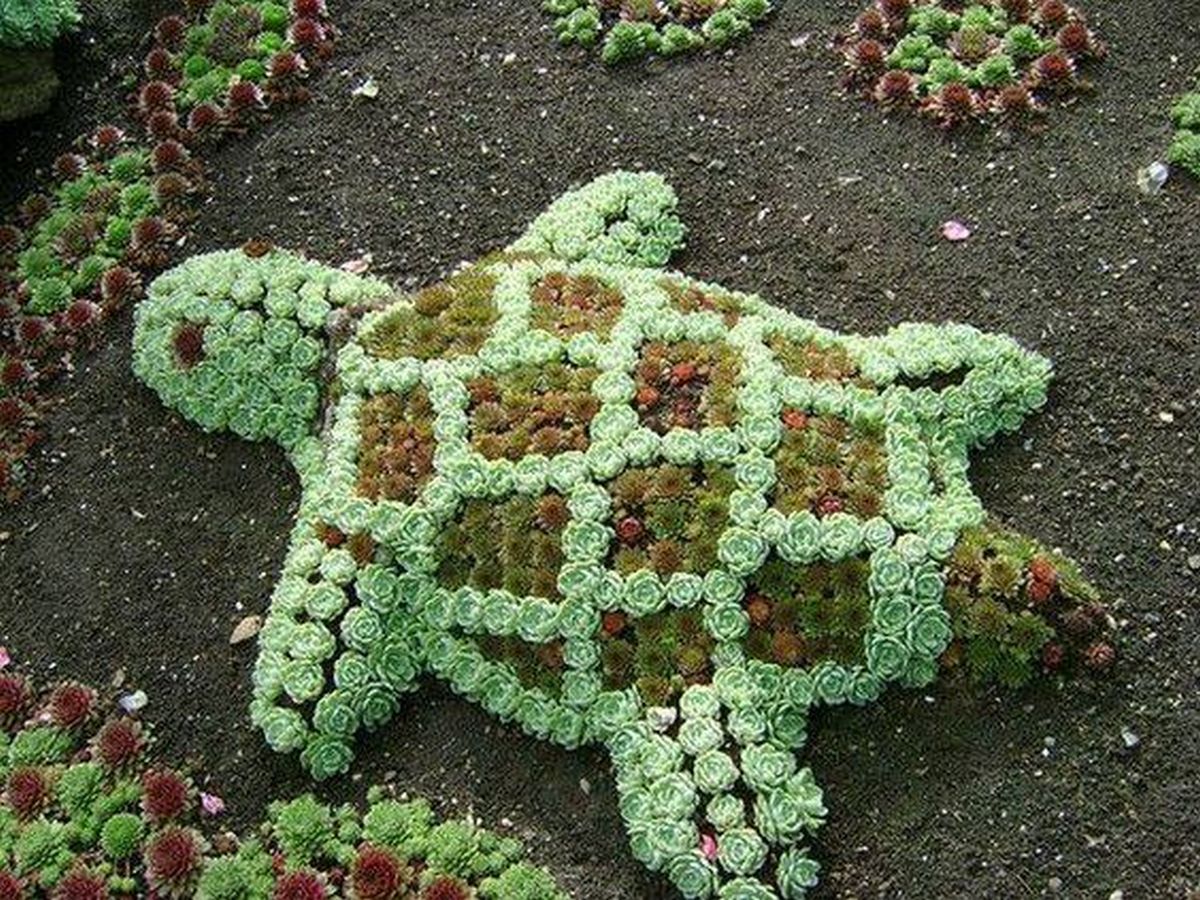
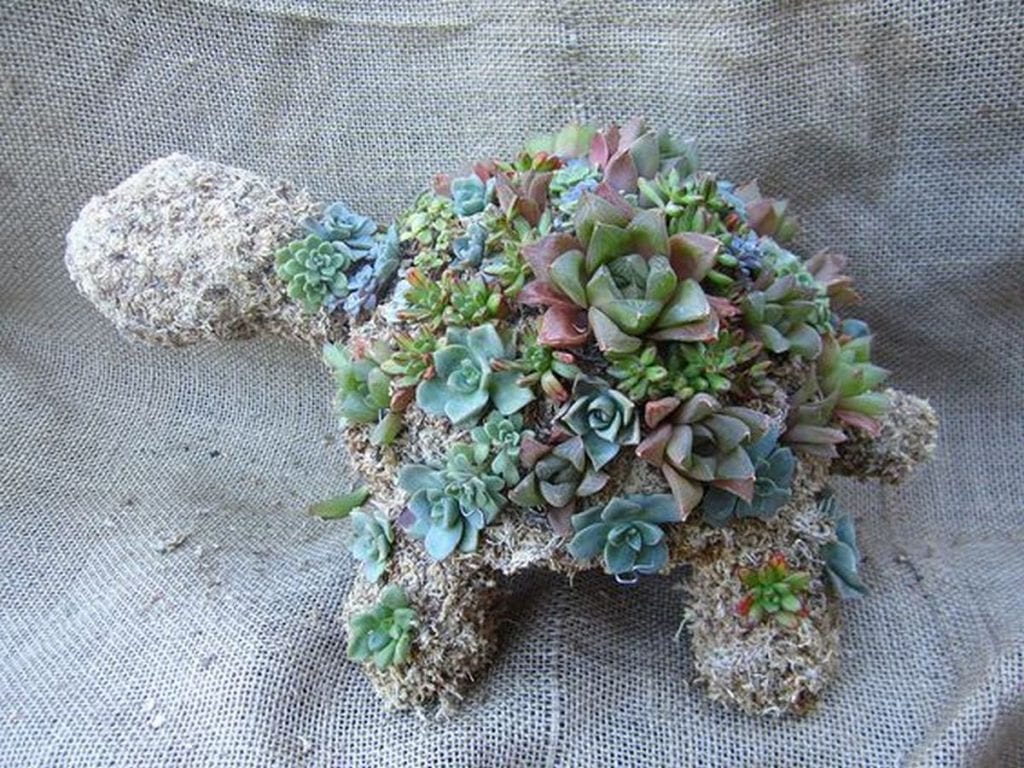
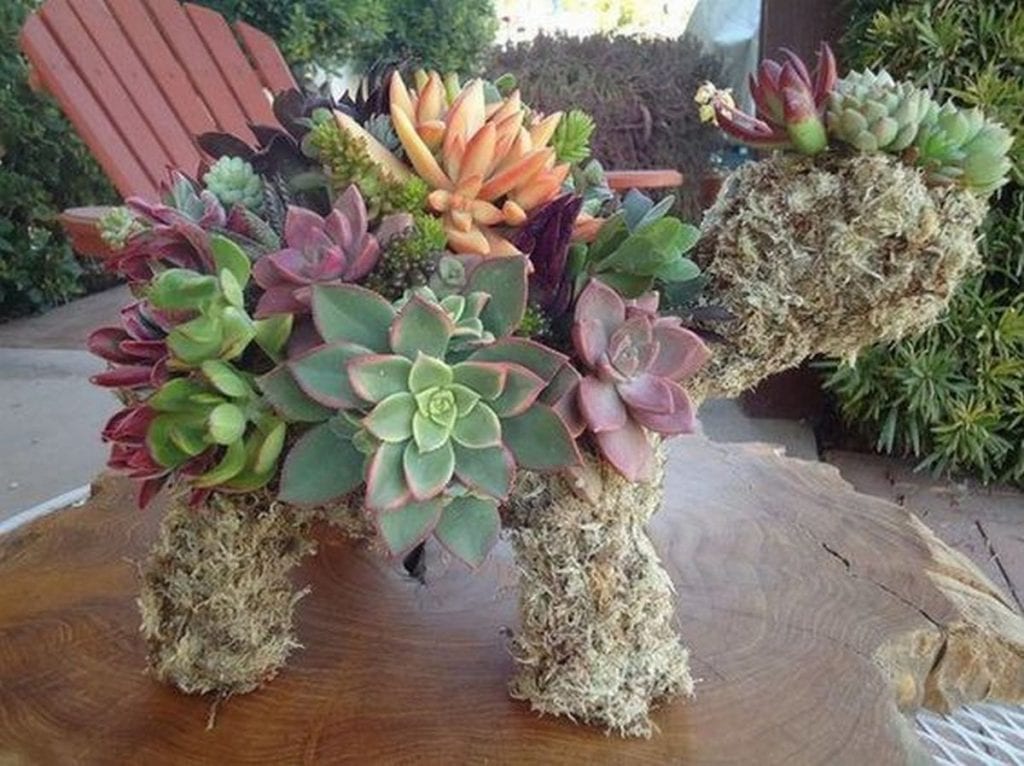



Decorating with Turtle Topiaries
Decorating with turtle topiaries can transform your garden or outdoor space into a delightful and enchanting area. These charming features add a touch of creativity and are versatile enough to complement various garden styles.
Here are some creative ideas for integrating turtle topiaries into your home and garden decor.
Place Them at Entrances
Positioning turtle topiaries at your garden entrance or alongside the front path creates a welcoming atmosphere. This placement not only highlights the unique design of your topiaries but also sets a playful tone for visitors as they enter your space.
Create a Theme Garden
Develop a theme garden where turtle topiaries are the stars. You could create a fairy garden and use these topiaries as mystical creatures within it. Surround them with small plants, pebbles, and maybe even a small pond to enhance the theme and make the turtles feel at home.
Use as Focal Points
Strategically place your turtle topiaries as focal points in your garden. This can be done by situating them in a central location, surrounded by contrasting plants or flowers that accentuate the structure and color of the topiaries. This not only draws attention but also gives your garden a structured aesthetic.
Grouping for Impact
Group multiple turtle topiaries together to create a more impactful display. This is especially effective in larger gardens where single items might get lost. A cluster of turtle topiaries can serve as a charming gathering that sparks conversation and admiration.
Incorporate in Outdoor Living Areas
Integrate turtle topiaries into outdoor living areas such as patios or decks. They can serve as organic, artistic elements among more functional furniture. Turtle topiaries in these spaces blend the boundaries between indoor comfort and outdoor freshness.
Seasonal Decor
Adorn your turtle topiary with seasonal decor to keep your garden looking festive all year round. String lights, ribbons, or even small ornaments can be attached to your topiaries during holidays or celebrations to add a festive touch.
Educational Tool for Kids
Use turtle topiary as an educational tool in gardens frequented by children. They can be used to teach kids about gardening, plant growth, and wildlife in a fun and interactive way. This not only decorates the space but also adds an educational element to your garden.
By incorporating turtle topiaries in these ways, you enhance both the aesthetics and the functionality of your garden, making it a more enjoyable and inviting space for everyone.
Maintenance and Care for Topiaries
Maintaining your turtle topiary ensures it remains a vibrant and eye-catching feature in your garden for years to come. Proper care and regular maintenance can significantly extend the life and beauty of your topiary.
Here are essential tips on how to keep your turtle topiary in top condition.
Regular Watering
Maintaining the right moisture levels is crucial for the health of your turtle topiary. It’s best to water your topiary deeply but infrequently, which encourages the roots to grow deeper and stronger, stabilizing your topiary and helping it withstand periods of drought.
This deep watering technique ensures the roots receive adequate moisture without causing waterlogging, which can lead to root rot. During hot, dry periods, the frequency of watering should be increased to keep the moss and succulents in your turtle topiary from drying out. Use a watering can to direct water precisely to the root areas, avoiding over-wetting the foliage which can lead to fungal diseases.
Pruning and Trimming
Regular pruning is essential to maintain the distinct turtle shape of your topiary. Over time, plants can grow beyond their intended bounds, which might obscure the artistic form of your turtle topiary.
By trimming back any overgrowth and removing dead or dying parts of plants, you ensure your topiary remains neat and visually striking. This helps preserve the intended turtle silhouette and promotes a healthier growth environment by increasing air circulation and reducing the likelihood of pests and diseases. Ideally, pruning should be done in the early spring or late fall to prepare the plant for new growth or to winterize it, respectively.
Fertilizing
Feeding your turtle topiary appropriately is key to fostering robust growth and sustaining vibrant plant health. Use a balanced, water-soluble fertilizer during the growing season to provide essential nutrients that support leaf and root development. Following the recommended dosage and frequency is important to avoid over-fertilization, which can lead to nutrient burn.
This can harm the plants, causing leaf scorch, stunted growth, and even death, thus disrupting the overall appearance and health of your turtle topiary. For best results, fertilize early in the morning or late in the afternoon to prevent rapid evaporation and give the plants time to absorb the nutrients effectively.
Pest and Disease Management
Keep an eye out for pests and diseases that can affect the health of your turtle topiary. Treat infestations or infections early with appropriate organic or chemical treatments, depending on the severity and your preferences for garden care.
Winter Care
If you live in a region with cold winters, consider protecting your turtle topiary from frost. Cover it with burlap or move it to a sheltered location to prevent damage from freezing temperatures. This is particularly important for succulent topiaries, as they are more susceptible to cold damage.
Annual Refresh
Once a year, take the time to refresh the components of your turtle topiary. Replace old moss, replenish soil nutrients, and check the structural integrity of the wire frame. This annual upkeep helps keep your topiary in optimal condition and extends its lifespan.
By following these maintenance tips, your turtle topiary will continue to be a delightful addition to your garden, bringing joy and beauty to your outdoor space season after season.
Conclusion
Creating a turtle topiary is a rewarding project that enhances any garden with its unique charm and artistic flair. With proper care, including regular watering, pruning, and appropriate fertilization, your topiary will thrive and continue to delight for years to come. This delightful addition to your outdoor space is sure to spark joy and conversation among all who encounter it.
We have more incredible outdoor projects. Check out our privacy screen ideas guide next!

